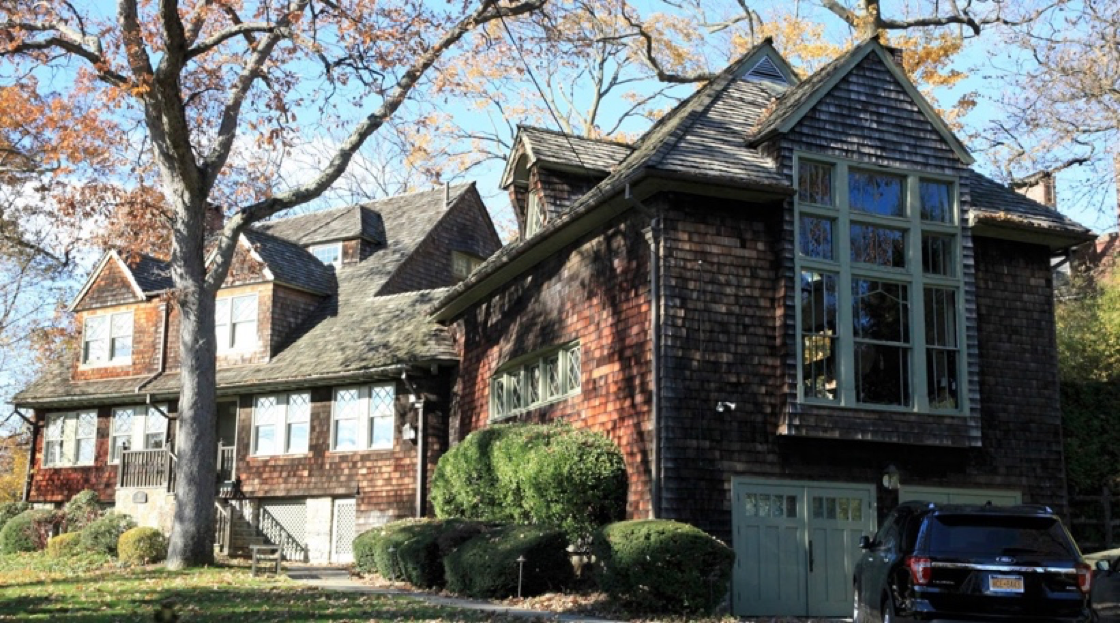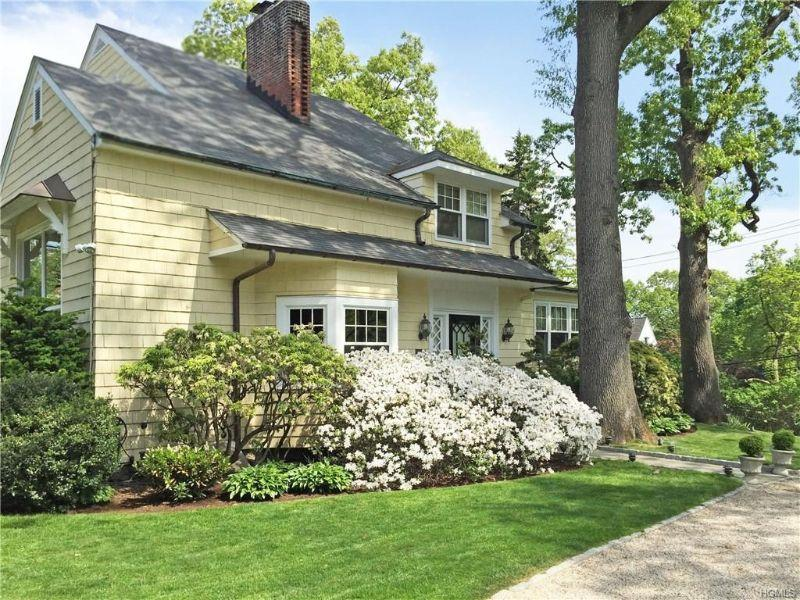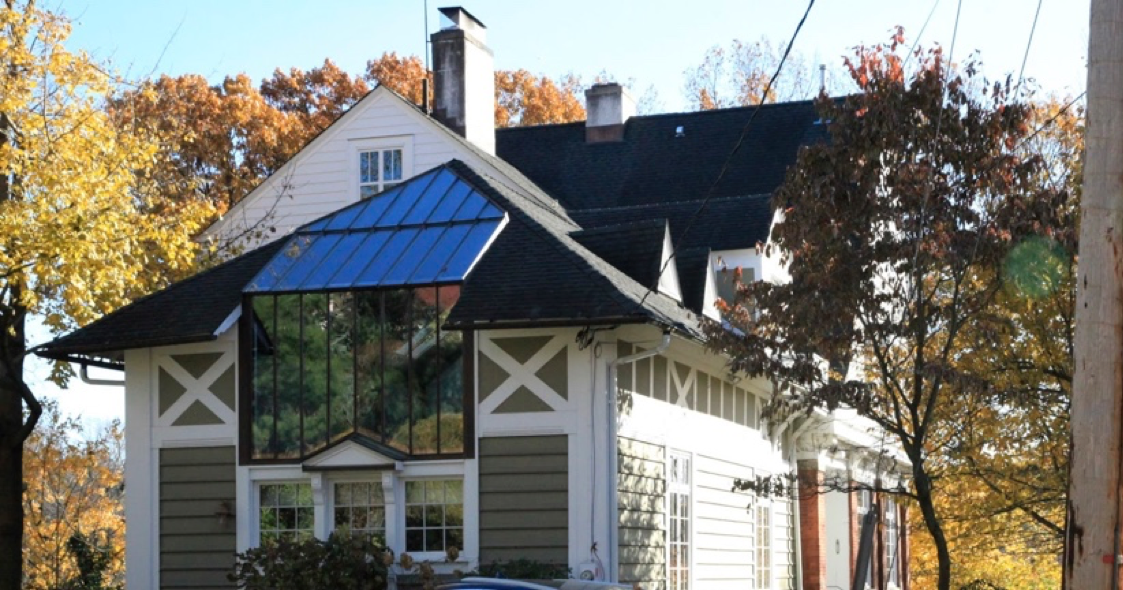As a tribute to the village’s artists, we presented for inspection the historic studios of WILL and MARY LOW (25 PRESCOTT AVENUE), Lorenzo Hatch (6 Lookout Avenue), and Hermann Schladermundt (8 Park Avenue). These studios have retained their large north-facing windows, while affording contemporary families the luxury of grand and comfortable indoor spaces.

In 1897, William V. Lawrence enticed the internationally recognized artist, Will Low, and his French wife to move to Lawrence Park and join other artists in his newly developed “colony” by offering Low a house with a studio large enough for him to paint his famous murals. After the death of his wife in 1909, Low renewed a friendship with an American painter, Mary Macmonnies, who was divorcing. They soon were married and she moved to the Prescott house in 1910 where the artist couple lived until his death in 1932 and hers in 1946.
The 1891 shingled house, located on the Prescott side of Wellington Circle and situated at an angle on the property, did not have a studio, so Lawrence added a 24-foot-square room to the existing structure in 1897. The large studio was located at the southeast end of the house, with ample light from the enormous east-facing window, as well as a large north-facing window and skylight incorporated into the adjacent wall. Beneath the studio was a dirt-floor crawl space from which large canvases could be raised.
Architect: William Bates

This charming residence, former home of Lorenzo Hatch, engraver, is located on the Lawrence Park Hilltop, originally Bronxville’s famed artist’s colony. The house, dating from 1892, is built around a double-height great room that was originally the artist’s studio. It features a large north-facing window, built in bookcases, a bay window facing West and a cozy fireplace tucked under the stairway.
Architect: William A. Bates

In 1898, artist Hermann Schladermundt, known for his architectural decoration, moved into a newly built studio-home near the foot of Park Avenue, just above where the yellow brick road ascends the hill into Lawrence Park. The year before, he had created a frieze for one of the large rooms in the Gramatan Inn that was destroyed by fire shortly thereafter. Some of his early training was with Carrere & Hastings architects.
The artist’s house-studio at 8 Park Avenue is of stucco, stone, and shingle design. It also includes brickwork and ornamental wood siding. From the front the house appears quite modest, but seen from behind, the structure takes on a very different, rather commanding presence with its large two-story studio window. After the artist’s death, the house became the residence of the artist’s son, an architect, who remodeled and modernized the home in the 1940s.
Architects: Walker and Morris